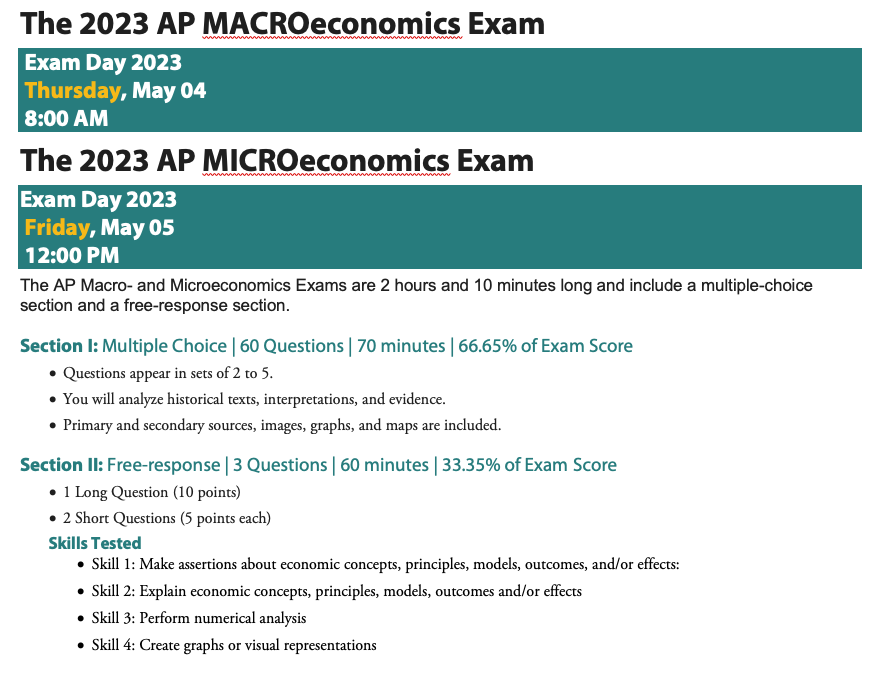Unit 1
Basic Economic Concepts
1.1 Scarcity
1.2 Opportunity Cost and the Production Possibilities Curve (PPC)
1.3 Comparative Advantage and Gains from Trade
1.4 Demand
1.5 Supply
1.6 Market Equilibrium, Disequilibrium, and Changes in Equilibrium
Unit 2
Economic Indicators and the Business Cycle
2.1 The Circular Flow and GDP
2.2 Limitations of GDP
2.3 Unemployment
2.4 Price Indices and Inflation
2.5 Costs of Inflation
2.6 Real v. Nominal GDP
2.7 Business Cycles
Unit 3
National Income and Price Determination
3.1 Aggregate Demand (AD)
3.2 Multipliers
3.3 Short-Run Aggregate Supply (SRAS)
3.4 Long-Run Aggregate Supply (LRAS)
3.5 Equilibrium in the Aggregate Demand� Aggregate Supply (AD� AS) Model
3.6 Changes in the AD� AS Model in the Short Run
3.7 Long-Run Self-Adjustment
3.8 Fiscal Policy
3.9 Automatic Stabilizers
Unit 4
Financial Sector
4.1 Financial Assets
4.2 Nominal v. Real Interest Rates
4.3 Definition, Measurement, and Functions of Money
4.4 Banking and the Expansion of the Money Supply
4.5 The Money Market
4.6 Monetary Policy
4.6 The Loanable Funds Market
Unit 5
Long-Run Consequences of Stabilization Policies
5.1 Fiscal and Monetary Policy Actions in the Short Run
5.2 The Phillips Curve
5.3 Money Growth and Inflation
5.4 Government Deficits and the National Debt
5.5 Crowding Out
5.6 Public Policy and Economic Growth
5.6 Economic Growth Market
Unit 6
Open Economy — International Trade and Finance
6.1 Balance of Payments Accounts
6.2 Exchange Rates
6.3 The Foreign Exchange Market
6.4 Effect of Changes in Policies and Economic Conditions on the Foreign Exchange Market
6.5 Changes in the Foreign Exchange Market and Net Exports
6.6 Real Interest Rates and International Capital Flows



